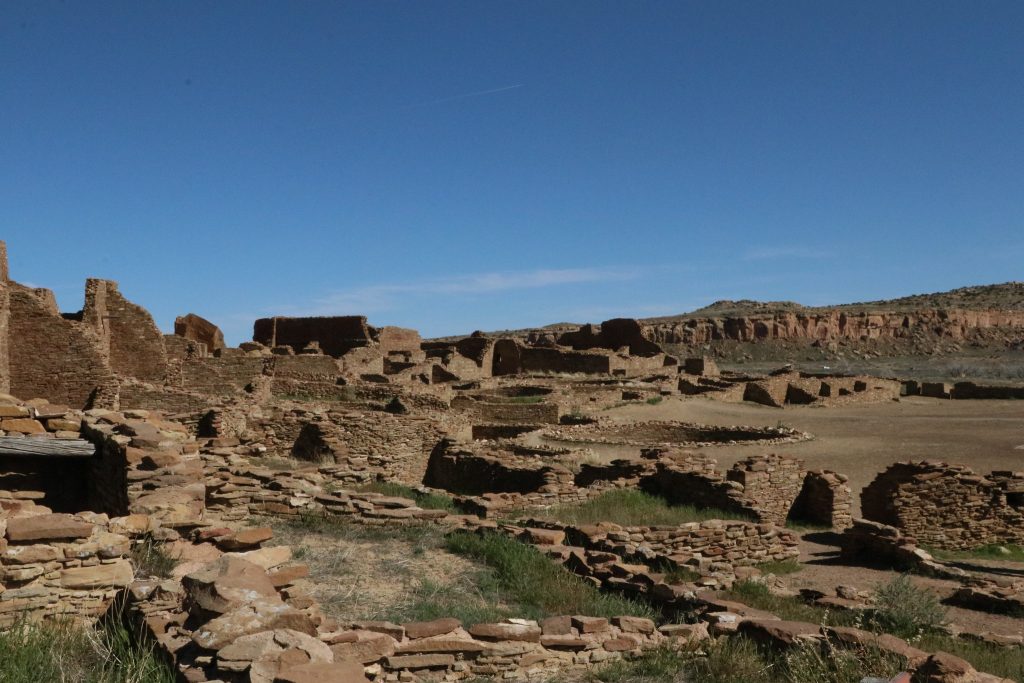
By Brian Vallo, Governor of the Pueblo of Acoma
Santa Fe New Mexican | September 28, 2021
For generations, the Pueblo of Acoma, along with other pueblos and tribes, lived on lands that currently are part of the public domain.
What are now world-famous national parks and monuments — Chaco Canyon, Mesa Verde, Bears Ears and Chimney Rock — were once our homes, farms and hunting grounds. We maintain deep cultural ties to these places and the public lands that surround them.
The federal government, however, has rarely been willing to recognize and honor those ties and often has prioritized development over stewardship. It has done so without engaging tribal leaders and communities in meaningful, good-faith consultation.
These were once our lands, and our knowledge and understanding of them is deep and intimate; yet, when decisions were made about whether to open them to oil and gas drilling or mining, we were not notified, or our concerns were quickly dismissed so that development projects could move forward. Consultation became a check-the-box exercise.
Because this development-first mindset guided so many of the federal government’s decisions concerning the public domain, our ancestral lands suffered.
Look no further than the landscape surrounding Chaco Canyon — much of it resembles an industrial zone. Centuries-old villages that were built and inhabited by my ancestors now are surrounded by oil and gas wells and tanks. Ancient pathways that linked villages with shrines, water resources and other features on the landscape have been obliterated by oil and gas roads.
We would not allow this to happen on the hallowed ground of Gettysburg or in the waters surrounding the Statute of Liberty. Yet, it has happened, again and again, in places that are just as important to tribal people. And it will continue to happen — over the past three years, more oil and gas leases have been proposed near Chaco Canyon, Chimney Rock and Bears Ears — unless the federal government fundamentally changes its approach to oil and gas development.
A new report from Archaeology Southwest identifies several ways the federal government, particularly the Interior Department, can do this. It recommends working with pueblos and tribes to identify no-leasing zones in landscapes with significant cultural value, like the ones that surround Chaco Canyon, Chimney Rock, Bears Ears and Mesa Verde. Within these zones, which should be broad and based on maintaining context, setting, and cultural integrity, the Interior Department must focus on managing for the protection and restoration of cultural values.
The report also provides several recommendations on how the Interior Department can improve tribal consultation. It is essential that, in advance of committing areas to development, the Interior Department notify and consult with tribes that may have cultural ties to the area. The Interior Department must no longer wait to initiate consultation until after the die has been cast — until after development is a foregone conclusion and tribes are forced into a situation where we are trying to minimize the damage. Our perspectives should be obtained and fully accounted for at the outset and throughout the decision-making process.
As Acoma’s governor, I support these recommendations and encourage Secretary of the Interior Deb Haaland to fully embrace them, as she moves forward with reforms to the oil and gas program. If tribal communities are to maintain the ties that connect us to our ancestral lands, we must, before it is too late, change the way that we manage them.
This guest column originally appeared in the Santa Fe New Mexican.

